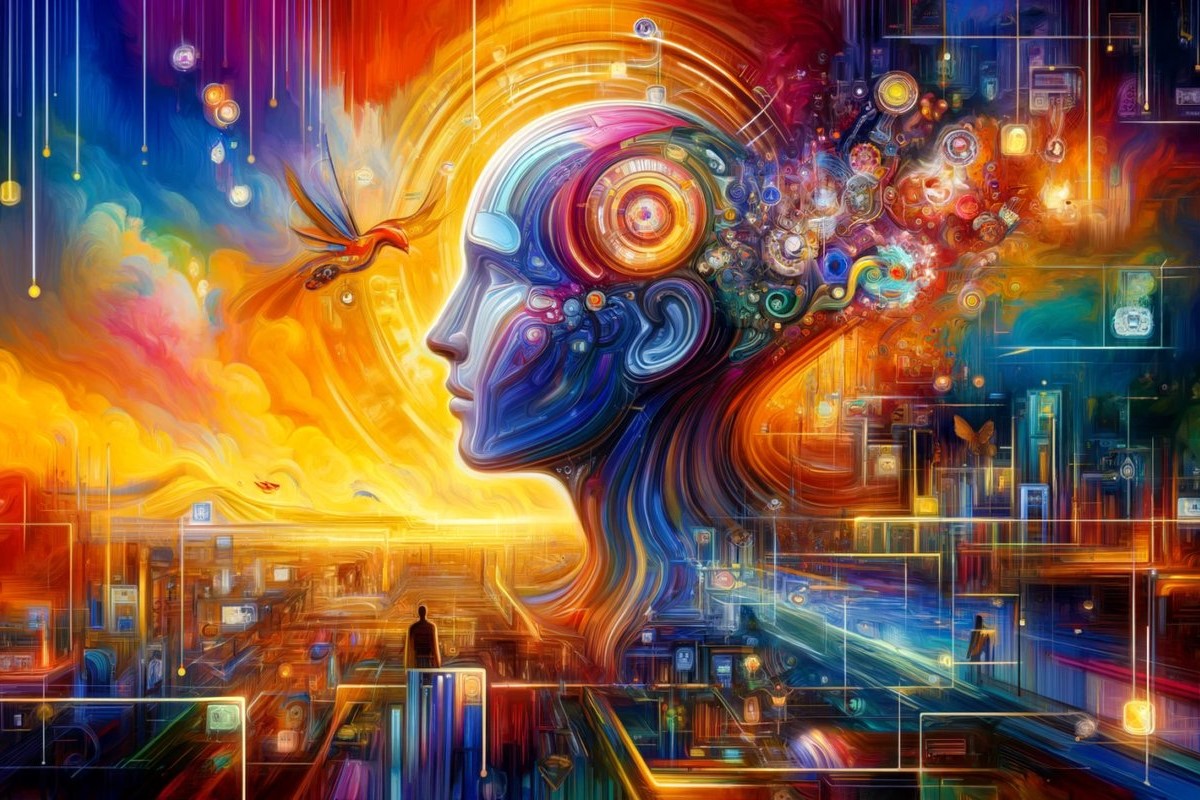
What is Deep Dream Generator? Imagine a tool that transforms ordinary photos into surreal, dream-like images. Deep Dream Generator does just that by using artificial intelligence to enhance and morph pictures into stunning, often bizarre, works of art. Developed by Google, this tool leverages neural networks to detect patterns and amplify them, creating unique visual experiences. Whether you're an artist looking for inspiration or just someone who loves playing with images, Deep Dream Generator offers endless possibilities. Ready to dive into the world of AI-generated art? Let's explore 25 fascinating facts about this incredible tool!
Key Takeaways:
- Deep Dream Generator creates surreal images using AI, inspired by dream-like qualities. It has practical applications in art, advertising, film, psychology, and education, making it a versatile and engaging tool for various fields.
- While Deep Dream Generator offers unique and captivating images, it also faces challenges such as computational power, overfitting, ethical concerns, and quality control. Understanding these limitations can help users maximize its potential.
What is Deep Dream Generator?
Deep Dream Generator is a fascinating tool that uses artificial intelligence to create surreal and dream-like images. It takes an existing image and applies a neural network to enhance patterns and features, resulting in a unique piece of art. Here are some intriguing facts about this innovative technology.
-
Origin: Developed by Google in 2015, Deep Dream was initially a research project to understand how neural networks work.
-
Neural Networks: It uses convolutional neural networks (CNNs), which are designed to recognize patterns in images.
-
Dream-like Quality: The name "Deep Dream" comes from the dream-like quality of the images it produces, often resembling hallucinations.
-
Layers: The tool works by enhancing features at different layers of the neural network, each layer adding more complexity.
-
Inceptionism: The technique is also known as "Inceptionism," named after the movie "Inception" due to its dream-within-a-dream concept.
How Does Deep Dream Generator Work?
Understanding the mechanics behind Deep Dream Generator can be quite fascinating. It involves several steps and processes that transform ordinary images into extraordinary art.
-
Input Image: You start with a base image that you want to transform.
-
Neural Network Layers: The image is passed through multiple layers of a neural network.
-
Feature Detection: Each layer detects different features, such as edges, textures, and shapes.
-
Enhancement: The detected features are then enhanced, creating a more pronounced effect.
-
Iteration: This process is repeated multiple times to achieve the final dream-like image.
Applications of Deep Dream Generator
Deep Dream Generator isn't just a fun tool; it has practical applications in various fields. Its ability to create unique and captivating images makes it valuable in several areas.
-
Art: Artists use it to create surreal and abstract pieces.
-
Advertising: Marketers use it to create eye-catching visuals for campaigns.
-
Film and Media: Filmmakers use it for special effects and unique visual styles.
-
Psychology: Researchers study the images to understand human perception and cognition.
-
Education: Teachers use it to explain neural networks and AI concepts in a visually engaging way.
Interesting Facts About Deep Dream Generator
Here are some lesser-known yet fascinating facts about Deep Dream Generator that highlight its uniqueness and versatility.
-
Public Access: Initially a research tool, it is now available to the public through various online platforms.
-
Customization: Users can adjust parameters like layer depth and iteration count to customize their images.
-
Community: There is a vibrant online community where users share their creations and tips.
-
Open Source: The code for Deep Dream is open source, allowing developers to experiment and create their own versions.
-
Mobile Apps: Several mobile apps now incorporate Deep Dream technology, making it accessible on the go.
Challenges and Limitations
Despite its many advantages, Deep Dream Generator has some challenges and limitations. Understanding these can help users make the most of this tool.
-
Computational Power: Generating images requires significant computational resources.
-
Overfitting: Sometimes, the neural network can overfit, creating images that are too chaotic.
-
Ethical Concerns: There are ethical considerations regarding the use of AI in art and media.
-
Quality Control: Ensuring the quality and consistency of generated images can be challenging.
-
Learning Curve: There is a learning curve for new users to understand how to effectively use the tool.
Final Thoughts on Deep Dream Generator
Deep Dream Generator is a fascinating tool that blends artificial intelligence with creativity. It allows users to transform ordinary images into surreal, dream-like visuals. This tool has gained popularity for its ability to produce unique and often mind-bending artwork. Whether you're an artist looking for inspiration or just someone curious about AI's capabilities, Deep Dream Generator offers a fun and engaging way to explore the intersection of technology and art. Its user-friendly interface makes it accessible to everyone, regardless of technical expertise. So, if you haven't tried it yet, give it a go and see what kind of dreamscapes you can create. It's a perfect example of how technology can enhance our creative processes and open up new avenues for artistic expression.
Frequently Asked Questions
Was this page helpful?
Our commitment to delivering trustworthy and engaging content is at the heart of what we do. Each fact on our site is contributed by real users like you, bringing a wealth of diverse insights and information. To ensure the highest standards of accuracy and reliability, our dedicated editors meticulously review each submission. This process guarantees that the facts we share are not only fascinating but also credible. Trust in our commitment to quality and authenticity as you explore and learn with us.
